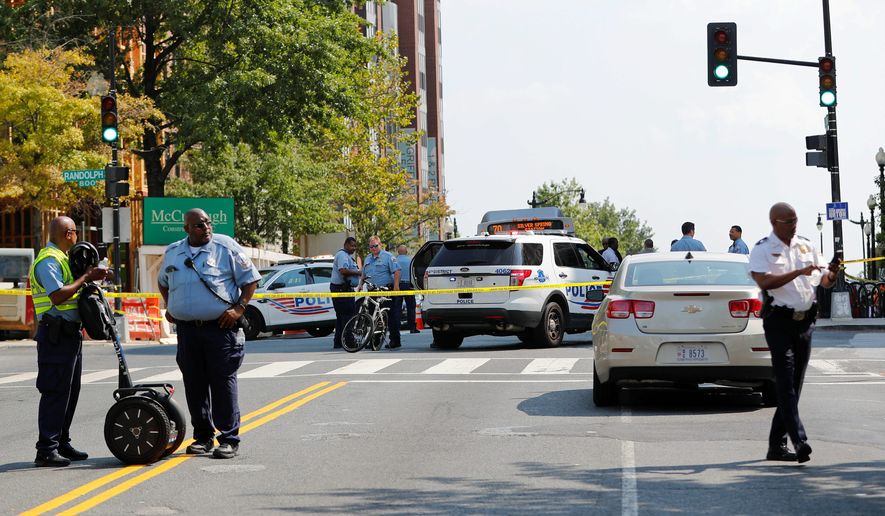The Metropolitan Police Department is adopting a new patrolling strategy that focuses on cultivating relationships between police officers and residents in an ongoing effort to reduce crime.
“Crime is a little bit more complicated than just throwing a couple of police officers at it,” Interim Police Chief Peter Newsham said Wednesday during a press conference with Mayor Muriel Bowser. “We do not intend to rest on our laurels. We intend to make adjustments to our patrol strategies in an attempt to continue to improve police service to our communities.”
Under the new patrolling strategy, each of D.C.’s seven police districts will be split into three sectors, or Police Service Areas. The 21 sectors will each be led by a captain, who will report to the area’s district commander.
This decentralized approach aims to allow officers to focus on smaller geographic areas and form connections within the neighborhoods they patrol. Community feedback on the new system was overwhelmingly positive, according to Chief Newsham.
“The benefits of this change are our middle managers — our patrol lieutenants — will have more consistent contact with the officers on a particular shift,” Chief Newsham said. “Middle managers will be able to have a better grasp on shift-specific crimes and policing concerns in their community.”
In addition to restructuring patrol areas, the department will revamp its officer recruiting and retention efforts, Chief Newsham said. Dividing districts into sectors will increase interaction between officers and their supervisors, promoting mentorship and closer evaluation of younger officers.
“The fact of the matter is that we have an experienced but aging command staff,” Chief Newsham said. “We need to identify the future leaders of this police department. This model provides us with an opportunity to better mentor and assess officer performance, and also helps us to identify the future leaders of MPD.”
Both Chief Newsham and Miss Bowser emphasized the the sector model as an opportunity to strengthen relationships between sector captains, officers and residents.
“It gives the chief another important tool, another important opportunity — and that is the opportunity to develop managers within MPD,” Miss Bowser said. “That is how we invest in and strengthen our force.”
As a result of the organizational shift, Chief Newhsam said he expects lower response times, and consequently lower crime rates in the future.
“Whenever you’re better able to manage your workforce, performance is going to improve, so that’s what we anticipate,” he said.




Please read our comment policy before commenting.